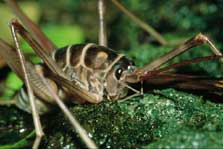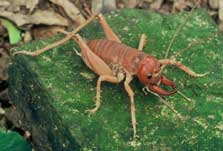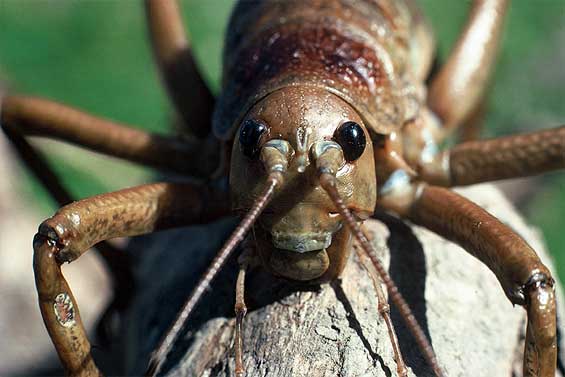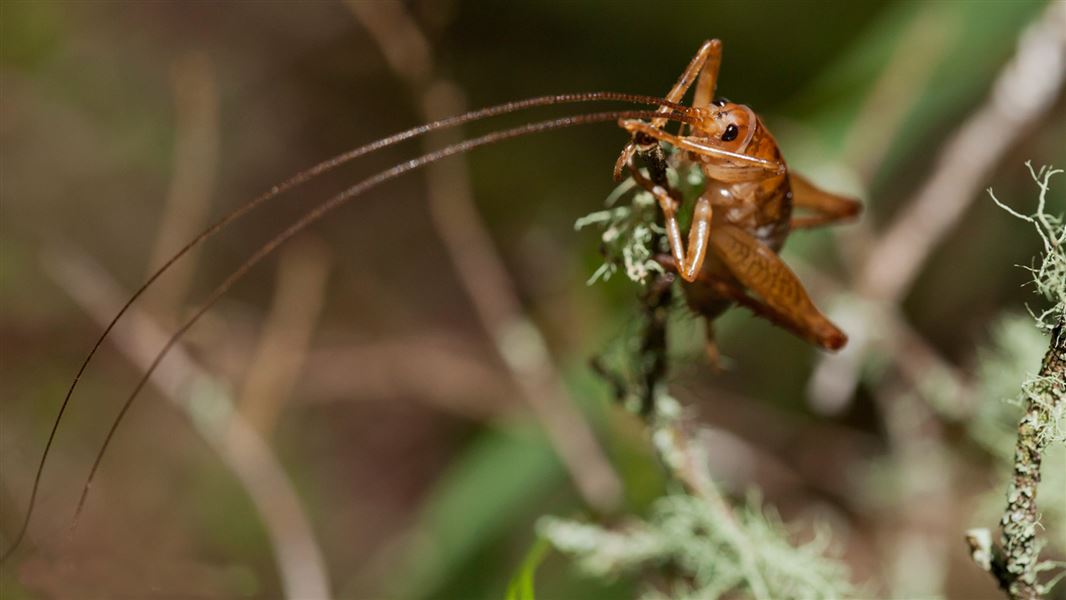Wētā are incredible looking creatures. They range in size, but with their big bodies, spiny legs, and curved tusks, they are one of New Zealand's most recognisable creepy-crawlies.
Facts
Wētā have become icons for invertebrate conservation in New Zealand because many species are threatened or endangered. There are more than 100 species of wētā in New Zealand, 16 of which are at risk.
There are five broad groups of wētā:
- Tree wētā
- Ground wētā
- Cave wētā
- Giant wētā
- Tusked wētā
Diet: Wētā are mainly herbivorous in the wild, but are also known to eat insects.
Habitat: They are nocturnal and live in a variety of habitats including grassland, shrub land, forests, and caves. They excavate holes under stones, rotting logs, or in trees, or occupy pre-formed burrows.
Many different species
The Giant wētā/wētāpunga of Little Barrier is the biggest, and the Nelson alpine wētā the smallest at 7 grams.
The Mahoenui giant wētā, long considered extinct on the mainland, was rediscovered in a patch of King Country gorse in 1962.
Species of wētā continue to be discovered. One of the three tusked species, the carnivorous Jaws', was found by lizard expert Tony Whittaker on Middle Mercury Island off the Coromandel Coast 29 years ago; another of them in the Raukumara Ranges on the East Coast of the North Island as recently as 1995.
Several species that were once found on mainland New Zealand are now only found on offshore islands. Very little is known about these offshore island populations.
Many of the giant species now only survive on protected land and many are endangered. Little is known about the past distribution of wētā.

Cave weta

Tusked wētā

Giant wētā
Threats
The decline of most wētā is due to three major causes:
- Predation: Wētā have evolved alongside native predators such as birds, reptiles, and bats. The introduction of predators such as rats, mustelids, cats, and hedgehogs has resulted in a sharp increase in the rate of predation.
- Habitat destruction: Caused by human impacts
- Browsers: Modification of weta habitat caused by browsers.
Our work
DOC is currently involved in several wētā translocation programmes, including one with the Mercury Island tusked wētā. The idea is to produce enough individuals to start a new population on another island. Where there are already enough individuals to transfer directly, as in the case of the Mahurangi Island translocation, this is done.
One feature of wētā conservation is the lack of basic information on their distribution, abundance, and ecology. Furthermore, there can be a great deal of variation within individual species, despite the fact there is little genetic difference between them. So, the classification and conservation of wētā is an evolving process.
A recovery plan is currently in action. It exists as a guide that can be modified as new information and conservation priorities emerge. Threatened wētā recovery plan (PDF, 350K)
The potential for recovery is quite high for a number of reasons:
- invertebrates respond well to management because they have a high rate of productivity
- many wētā adapt well to modified habitat
- invertebrates also require smaller areas to survive than vertebrates, and can survive in tiny fragments of original habitat
- wētā also thrive in captive breeding programmes. This is useful, because it means that research can take place that is difficult to obtain in the field.
